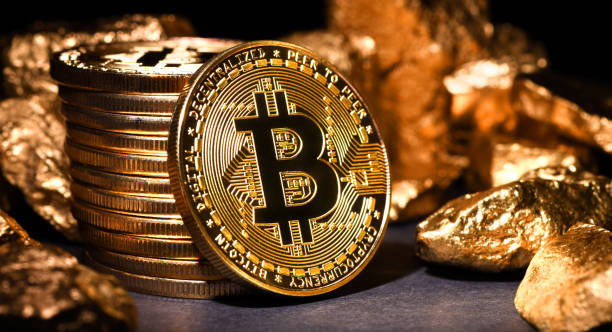Global economic landscapes are ever-evolving, driving changes in both traditional and modern investment avenues. As we witness significant shifts, gold has emerged as a preferred safe-haven asset, reaching unprecedented highs amid turbulent markets. Meanwhile, Bitcoin’s status as ‘digital gold’ faces scrutiny as it treads water. This intriguing divergence raises crucial questions about Bitcoin’s potential and position in the global economic system, inviting both seasoned and novice investors to reassess their strategies.
Bitcoin and Gold: Divergent Paths in Uncertain Times
Understanding the Disparity: Bitcoin’s Stagnation and Gold’s Rise
Recent market trends showcase a fascinating contrast between the performances of Bitcoin and gold. Industry expert Exy highlights gold’s steady climb to record-breaking levels, a stark contrast to Bitcoin’s static behavior. This disparity points to a growing divide between how traditional and digital assets are perceived and utilized as stores of value.
Exy’s analysis points to an ongoing struggle within the cryptocurrency realm, where market participants engage in high-risk maneuvers such as short-selling and pump-and-dump schemes. This behavior is in contrast to the euphoric surges that typically signal market peaks. As gold’s momentum presses forward, speculation arises about whether Bitcoin will follow suit once macroeconomic factors, such as Federal Reserve rate cuts, become more favorable.
Comparing Market Capitals: Gold’s Dominance Over Bitcoin
Recent data highlights that since the beginning of 2024, gold has pulled in over $15 trillion in inflows, reinforcing its role as a staple global store of value. This has set gold’s total market capitalization at an impressive $29.6 trillion, overshadowing Bitcoin’s valuation of $2.15 trillion.
Despite Bitcoin’s growing integration into mainstream financial systems, gold retains its status as the go-to asset during economic uncertainty. Innovations like tokenized gold products, including Tether Gold (XAUT) and PAX Gold (PAXG), have expanded the ways investors can engage with the precious metal, providing blockchain-based access to physical gold.
Industry analyst theunipcs notes that the global gold market has surpassed $30 trillion, gaining over $12 trillion within the past year. Such figures spark discussions about Bitcoin’s potential trajectory, where capturing even a fraction of gold’s market cap could significantly raise Bitcoin’s valuation.
What Factors Are Influencing Gold’s Surge Over Bitcoin?
Gold’s recent rise can be attributed to its historical role as a reliable store of value during economic downturns. With geopolitical tensions and inflationary pressures mounting, investors gravitate toward tangible assets like gold.
Can Bitcoin Overcome Its Current Stagnation?
Bitcoin’s potential to rebound hinges on various factors, including macroeconomic policy shifts, increased adoption, and enhancements in blockchain technology. Investors must remain vigilant, assessing these dynamics to navigate the crypto landscape effectively.
How Does Tokenized Gold Impact Traditional Gold Investments?
Tokenized gold products provide a novel way to invest in gold, combining the security and tangibility of physical gold with the accessibility and liquidity of digital assets. This development may attract both traditional and tech-savvy investors.
This comprehensive exploration of Bitcoin and gold unveils the complexities of their respective markets. By examining underlying technologies, investment opportunities, and evolving narratives, readers can gain a nuanced understanding and make more informed financial decisions.

